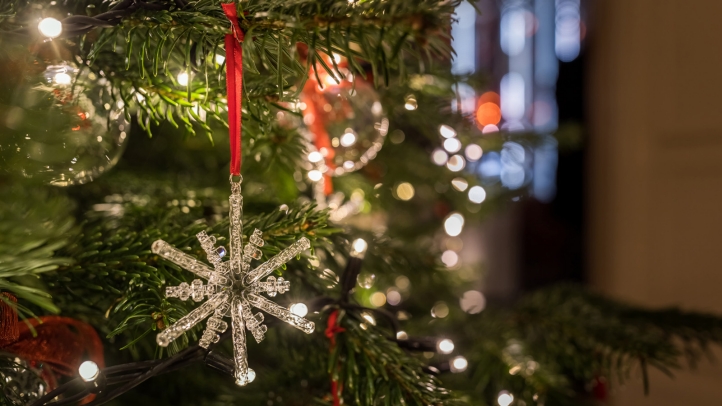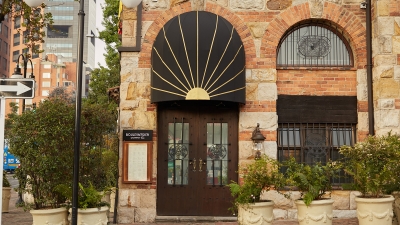Four Seasons Hotels in Bogota Are Ready for the Holidays





Regardless of the weather and religious preferences, the December holidays and Christmas are really the coziest time of the year. Joy is all around. Lights, candles, snowflakes, pine trees, bells, carols, delicious foods, presents, postcards, kind gestures, sweet greetings, and good wishes put everyone in a wonderful mood.
Four Seasons Hotel Casa Medina and Four Seasons Hotel Bogota, both located in the capital city of Colombia, embrace the season. Some rooms have private fireplaces and there are also common spaces to stay warm and comfortable for a relaxing break, a nice chat over coffee or a drink, or dining in. Both locations will have a special menu for Christmas and New Year’s Eve, as well as guides on how to move around making the best of the last month of the year.
Bogota prepares for Christmas in different ways. One of the most beautiful ones is the Festival of Lights that takes place in different streets and public areas such as Zona T, Parque 93, and Usaquén’s central plaza. Going for a walk to enjoy different displays of lights and decorations is certainly a great way of getting to know the city, enjoying its nocturnal life, and connecting with the festive spirit.
The Botanic Garden José Celestino Mutis also has an astonishing thematic show of lights, music and colour, called Polinizando, (pollinating) that honours nature, biodiversity and the opportunity to learn about national ecosystems. It runs through January 2024 and it is a lovely way to spend time as a family, especially with children.
Teatro Mayor Julio Mario Santo Domingo, located north of the city, has a holiday music schedule during December with a program for different tastes that includes classical music, flamenco, philharmonic rock and Colombian folk music.
From December 15 to 23, 2023, the capital district offers a bunch of Christmas shows under the campaign Navidad es cultura local (Christmas is local culture) in different public plazas and cultural spaces of the city, such as Plaza de Bolívar, La Santa María, and the Creative District of La Candelaria-Santafé in the downtown area. Theatre, acrobatics, live music, and innovating visual and sound content such as videomapping are part of this great effort.
All these cultural events wouldn’t be complete without festive foods. All over the world, Christmas banquets and treats unite people, allowing different communities to share their identity and lifestyles, and Colombia is no exception. Traditional dishes in Bogota include tamales, a corn, cassava, or rice dough enriched with meat or poultry, vegetables and seasonings, that is wrapped in plantain leaves, steamed and then served unwrapped on the same leaves. On December gatherings, such as novena (a Christian ritual of recitation of a set of prayers for nine consecutive days) small plates are common. Among the most popular ones are cookies glazed with Christmas decorations, buñuelos (fried balls made with cassava and cornstarch filled with fresh cheese), natilla (a sweet custard made with milk and cornstarch, flavoured with cinnamon and sugar), and hojuelas (fried wheat flour sheets sprinkled with sugar that are thin and crispy).
The famous ajiaco is a favourite on these dates too, although, like tamales, it is served all year round in restaurants, special events, and Sunday gatherings. It consists of a hearty chicken soup made with three different kinds of potatoes, an aromatic herb called guasca (gallant soldier), served with capers, avocado, heavy cream and corn on the cob.
In these unique recipes, the incorporation of foreign and indigenous culinary knowledge and ingredients is common. In the case of ajiaco, capers, cream and chicken come originally from Europe whereas potatoes, corn, and guasca are native. In the case of hojuelas and buñuelos, the technique is partly Spanish and Arab and adapted in America to tropical products and different palates.
Colombia has also assimilated iconic dishes served on Christmas Eve and Christmas Day in other regions of the world, such as roasted turkey and pork, puddings and cakes, or the Spanish “twelve grapes of luck” ritual at midnight on New Year’s Eve to welcome each month of the new year.
As in many other ways, Colombians have created and transformed social customs with a sense of place and history. In its mission to capture both local features and a cosmopolitan experience of togetherness, Four Seasons celebrates this very symbolic holiday. Bliss, love, and gratitude represent the message the company wants to spread throughout December and the forthcoming year.




 @FourSeasonsPR
@FourSeasonsPR